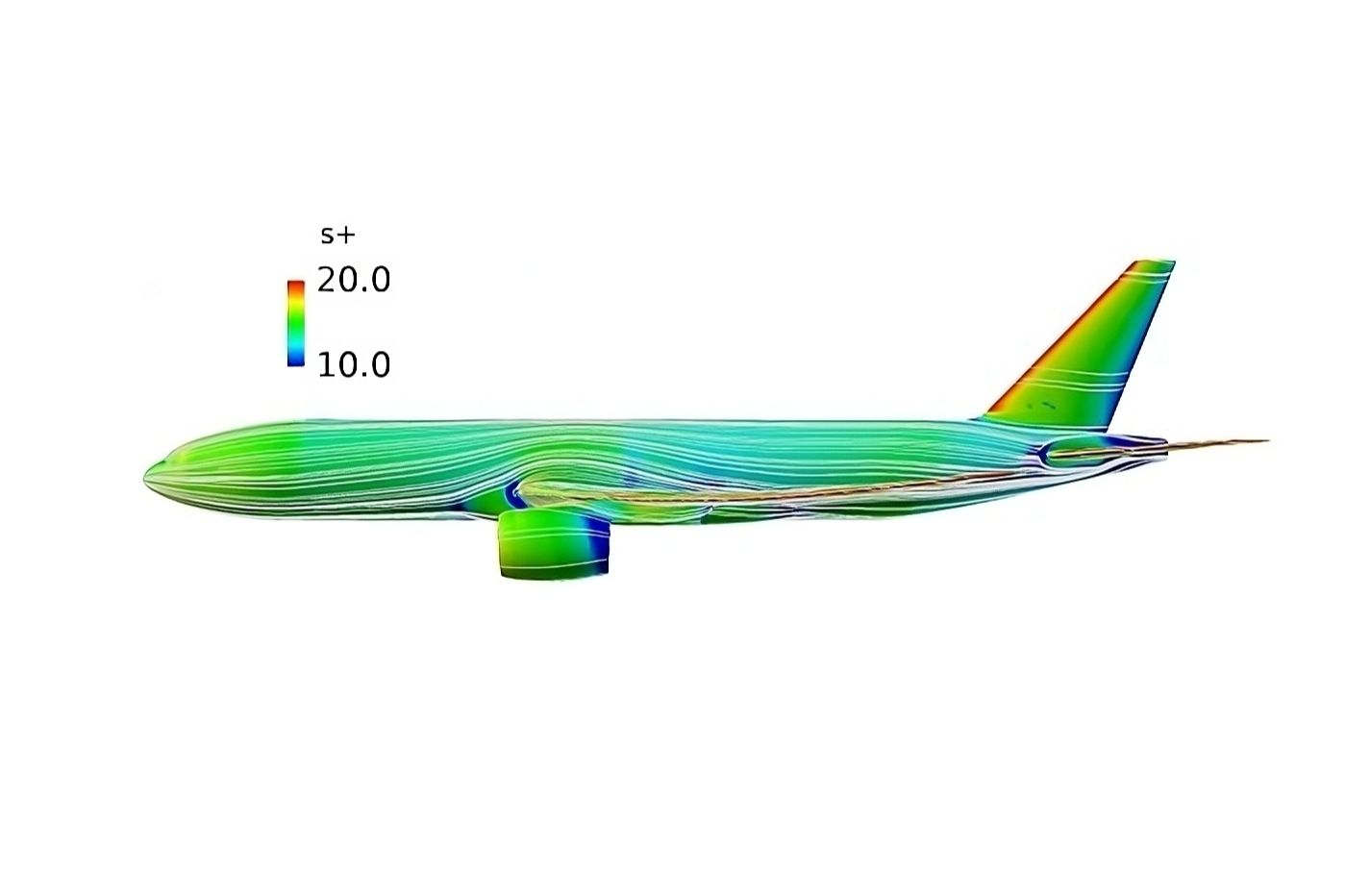Follow us on Google News (click on ☆)
This technology, developed in collaboration with major players like JAXA and Nikon, is inspired by the hydrodynamics of sharks. Initial results are promising, with a significant reduction in air resistance.

Analysis of drag reduction effect estimation using riblets on an aircraft equivalent to the Boeing 787-9 (s+ distribution and surface rationalizations)
s+: dimensionless number used to evaluate the drag reduction rate of the riblet
Shark skin, a natural model of efficiency
Sharks owe their speed to their dermal denticles, tiny tooth-shaped scales. These structures create micro-vortices that reduce drag, allowing water to glide more easily.
The paint developed by Japan Airlines reproduces these patterns on a nanoscale. Applied to 30% of the surface of a Boeing 787-9, it has already shown a 5% reduction in friction resistance during tests.
Significant fuel savings
On a long-haul flight like Tokyo-Frankfurt, this innovation could save 119 tons of fuel per year per aircraft. This equates to a reduction of 381 tons of CO₂ emissions annually.
Japan Airlines is now monitoring the durability of this paint under extreme flight conditions, including temperature variations and pressurization cycles. If the results are conclusive, the treated surface could be expanded.
An alternative to adhesive films
Unlike "shark skin" films already tested by other airlines, this paint is applied directly to the existing coating. It does not add weight to the aircraft and eliminates the risk of peeling in flight.
This innovative approach could well establish itself as a sustainable solution to improve the energy efficiency of existing aircraft, without requiring major structural modifications.
To go further: What is drag?
Drag is an aerodynamic force that opposes the motion of an object, such as an airplane, in a fluid, such as air. It is caused by friction resistance and turbulence generated by the shape and surface of the moving object.
In the context of aviation, drag is a key factor influencing fuel consumption. The higher it is, the more energy the aircraft must expend to maintain its speed, which increases CO₂ emissions.
To reduce drag, engineers explore solutions like optimizing aircraft shapes or using special coatings. By minimizing drag, planes become more energy-efficient, reducing their environmental impact while improving overall performance.